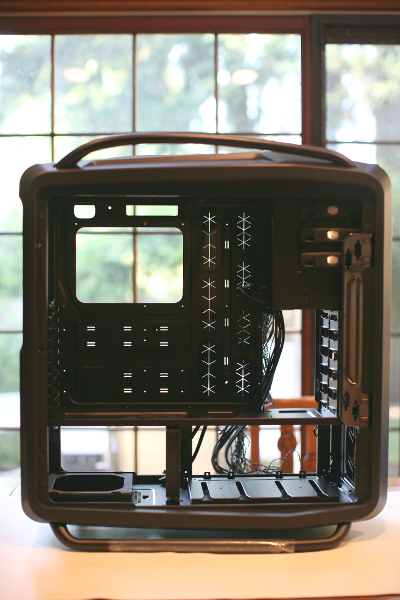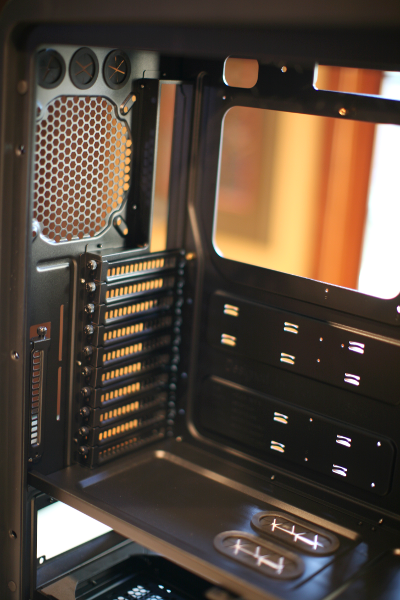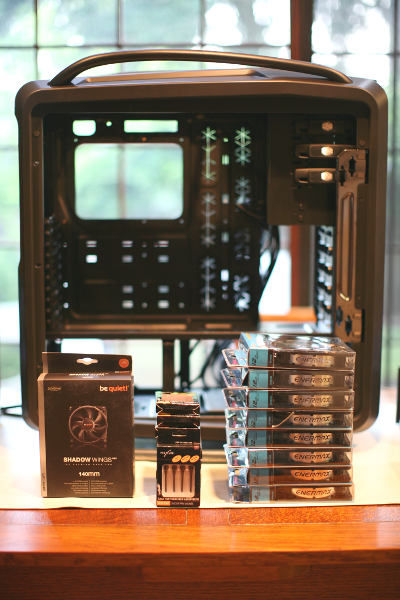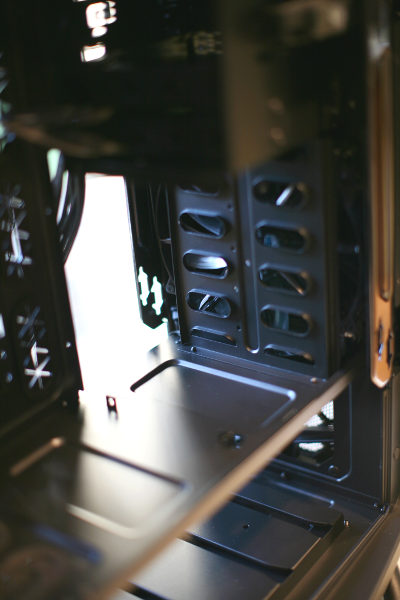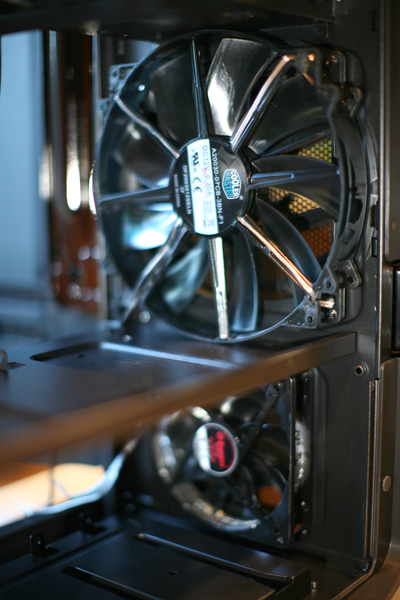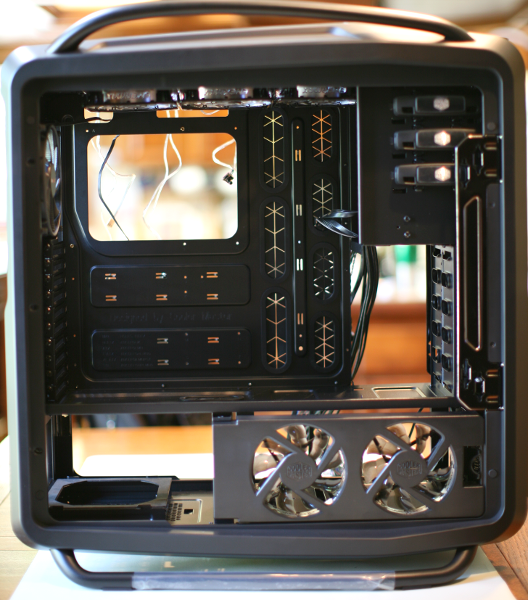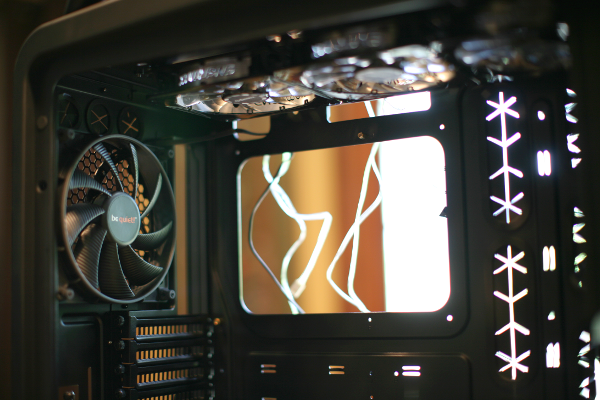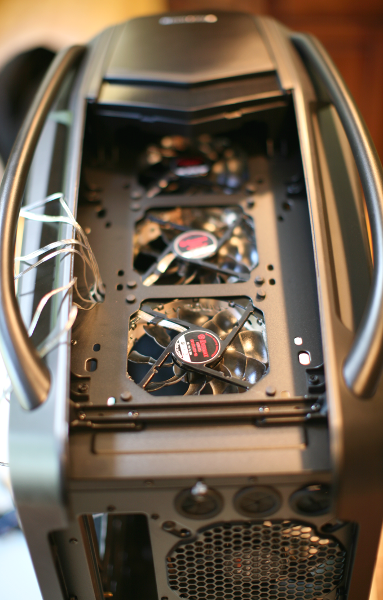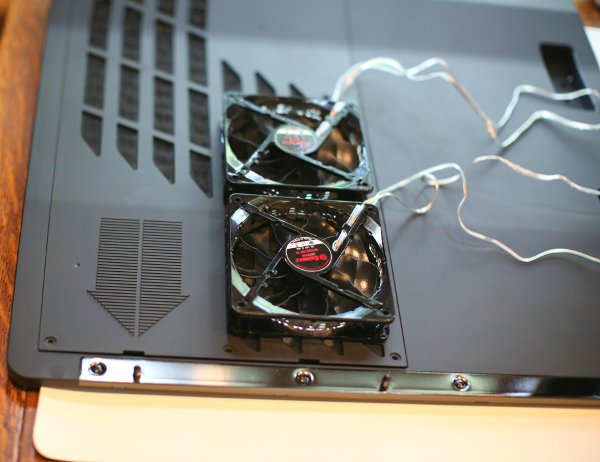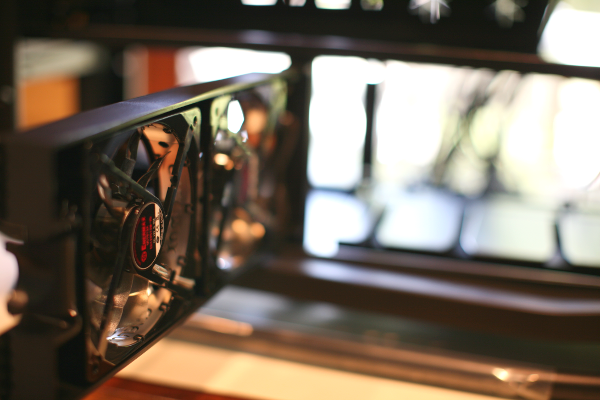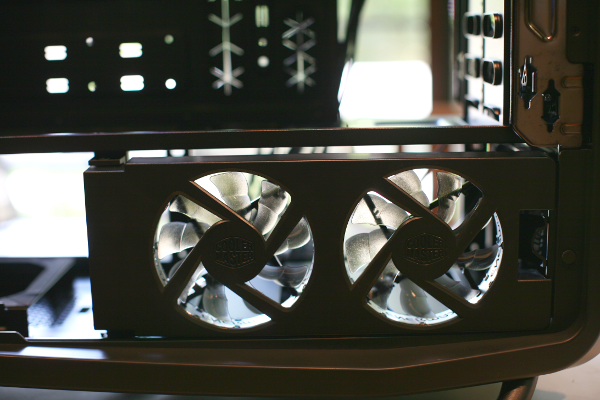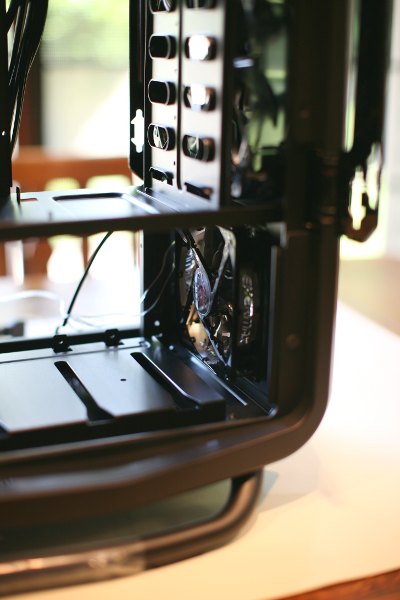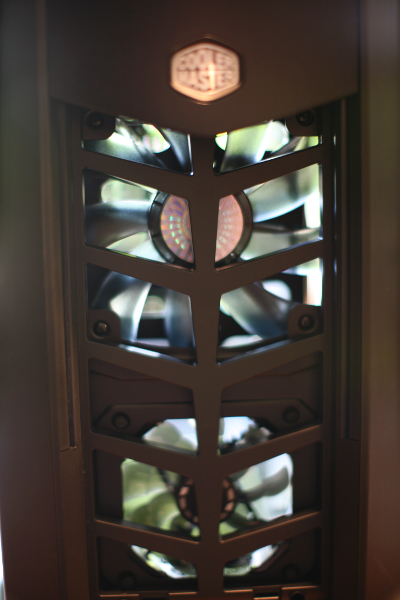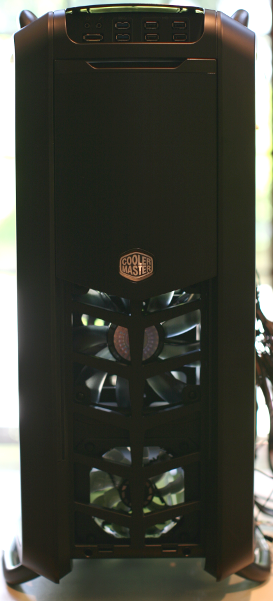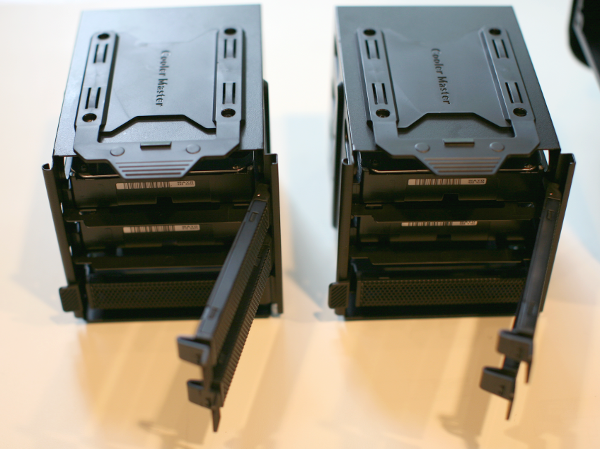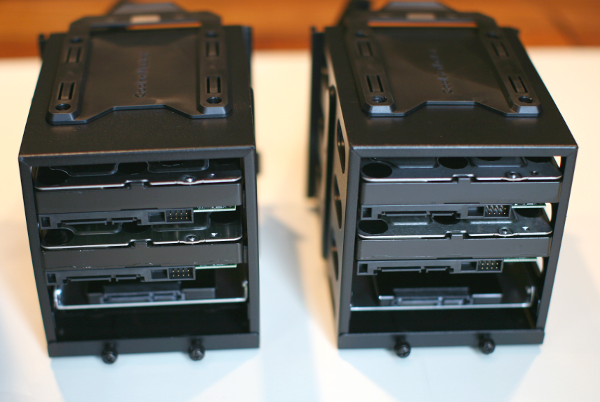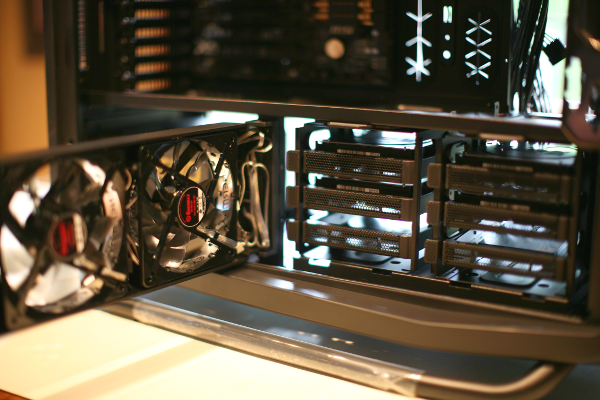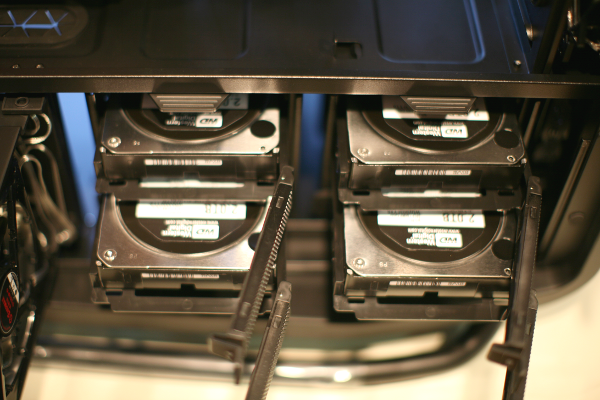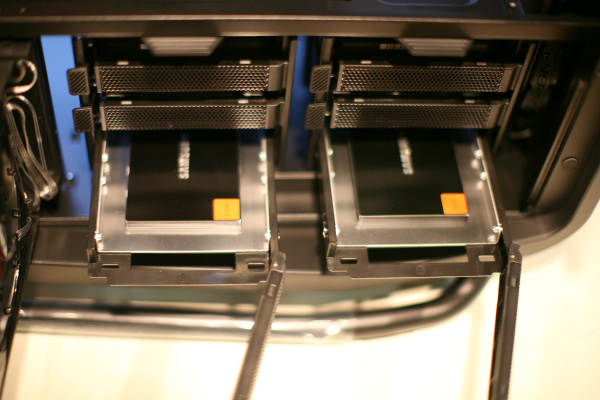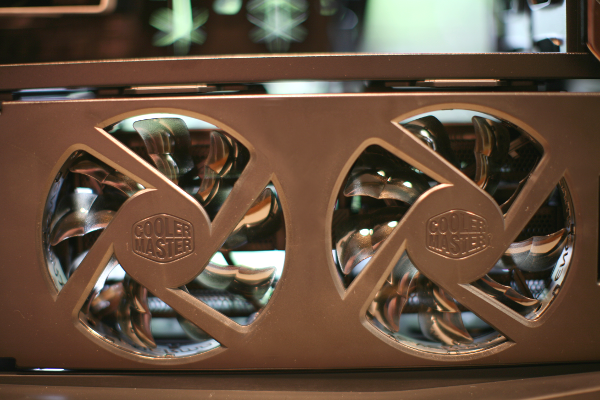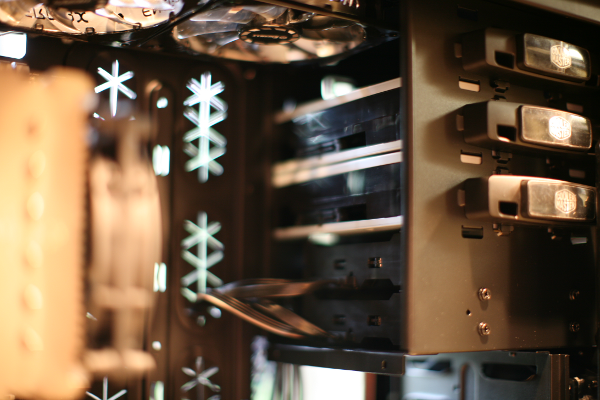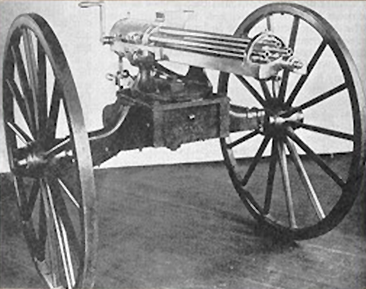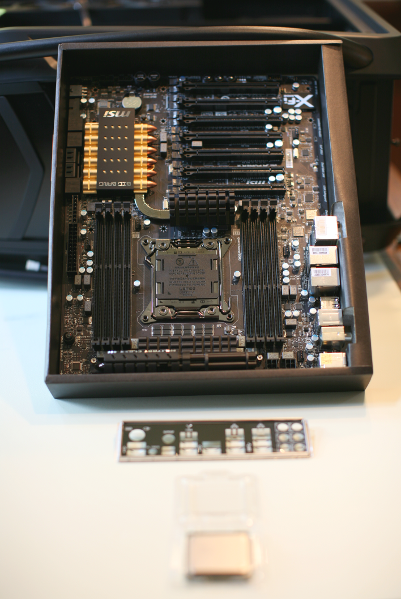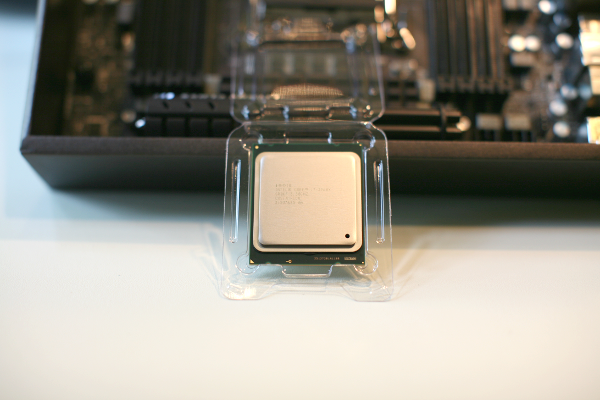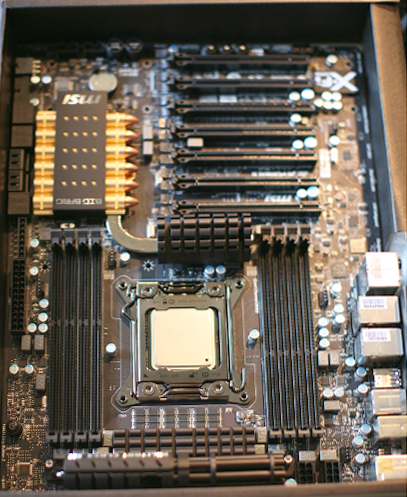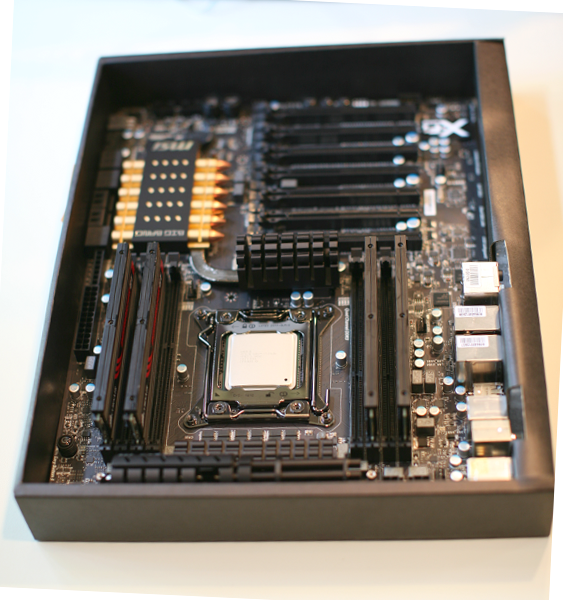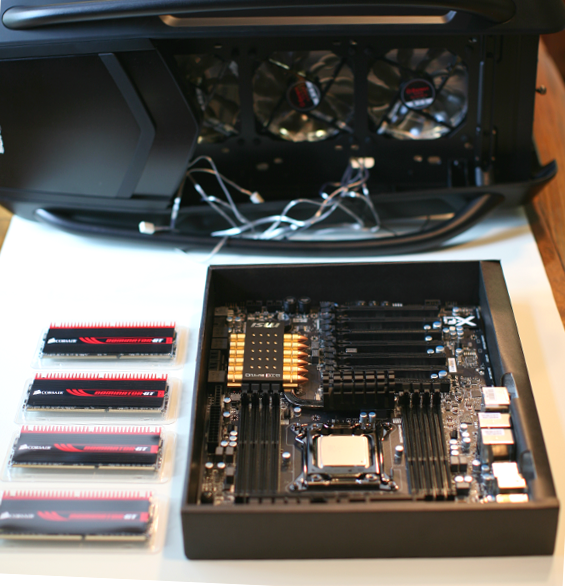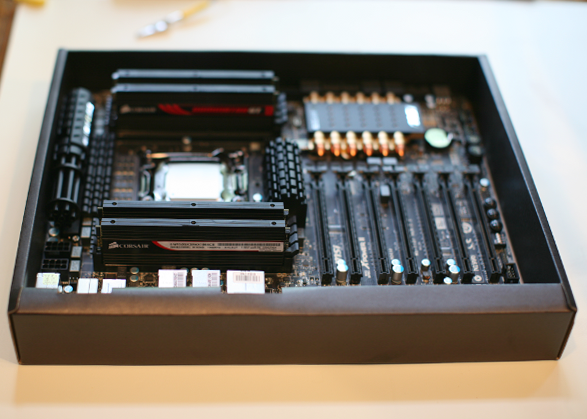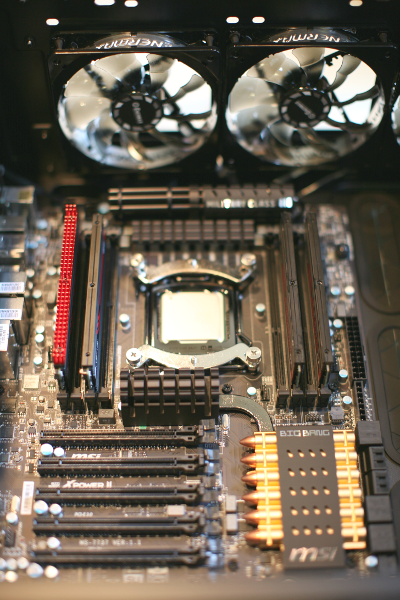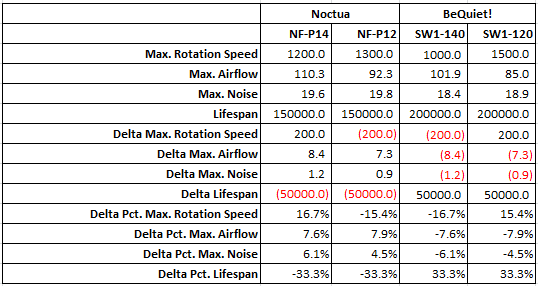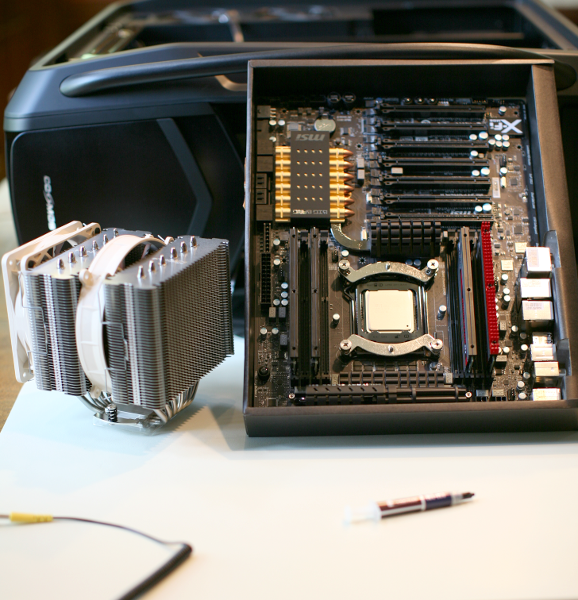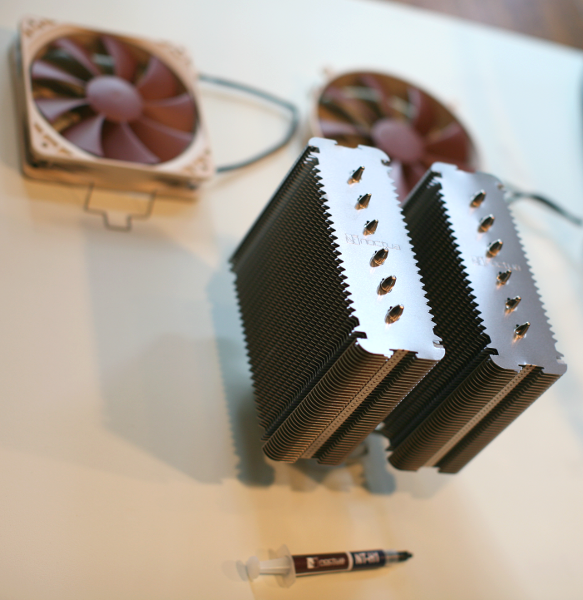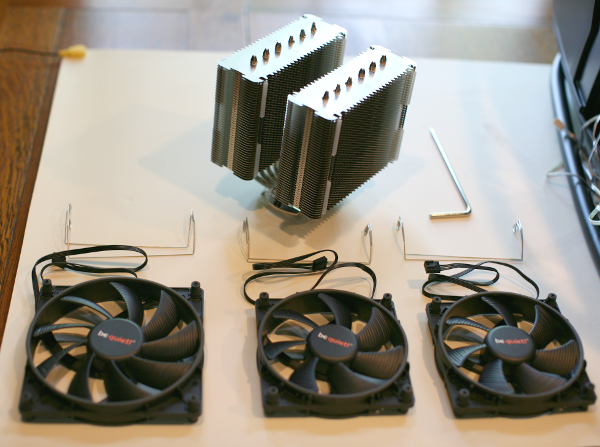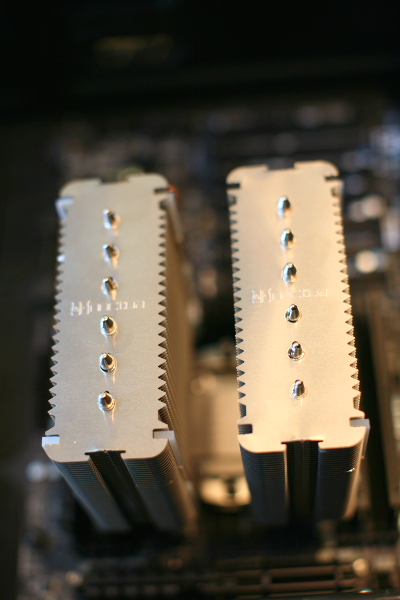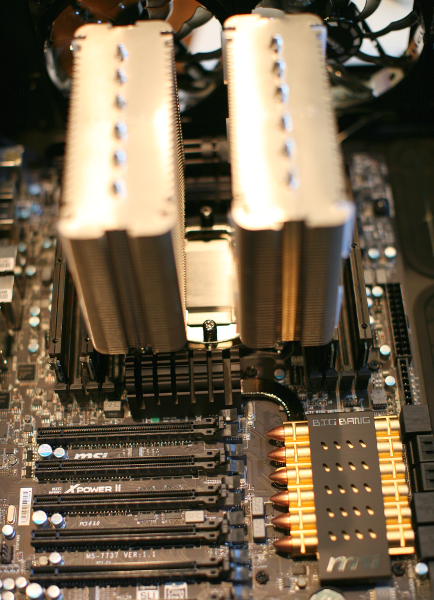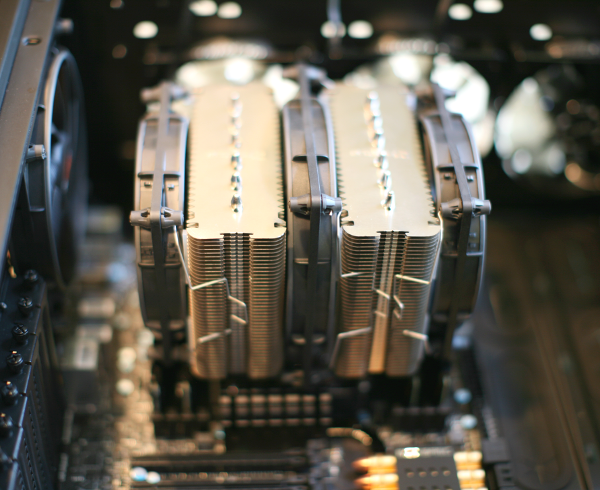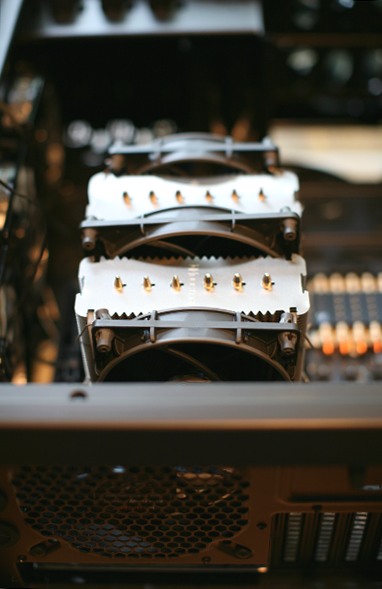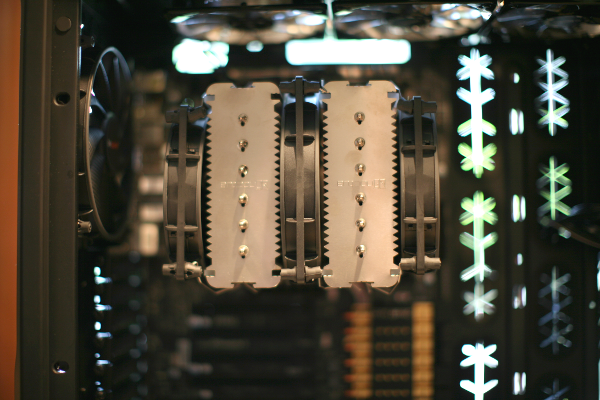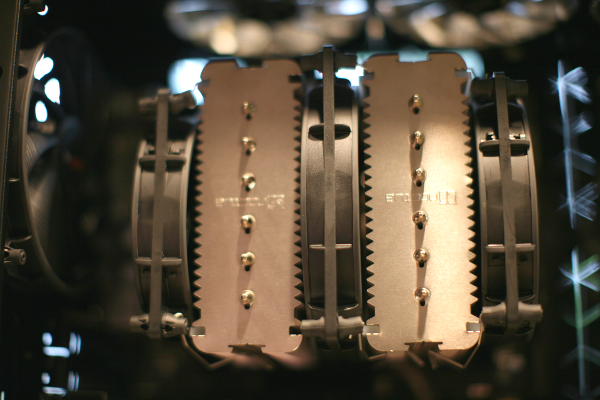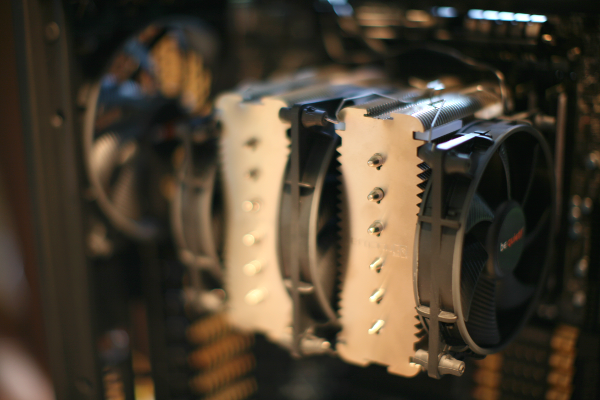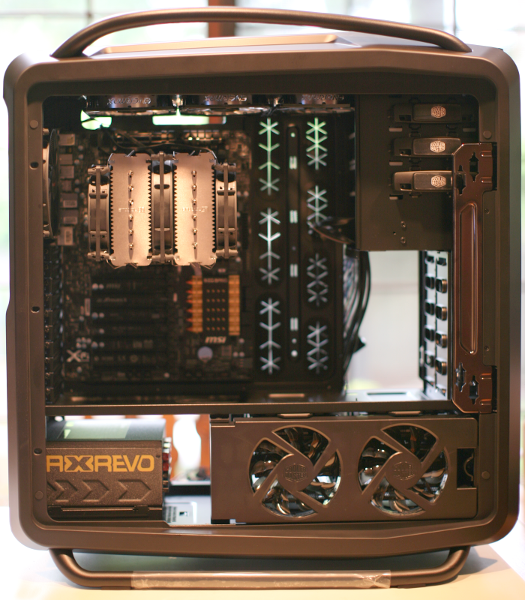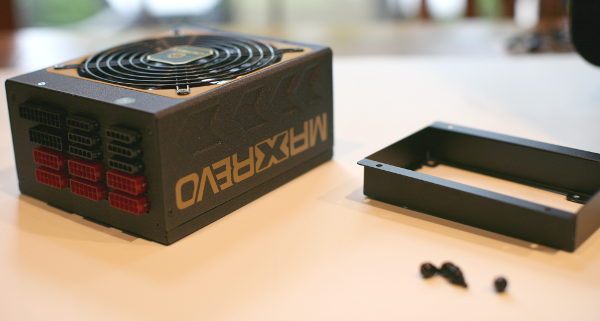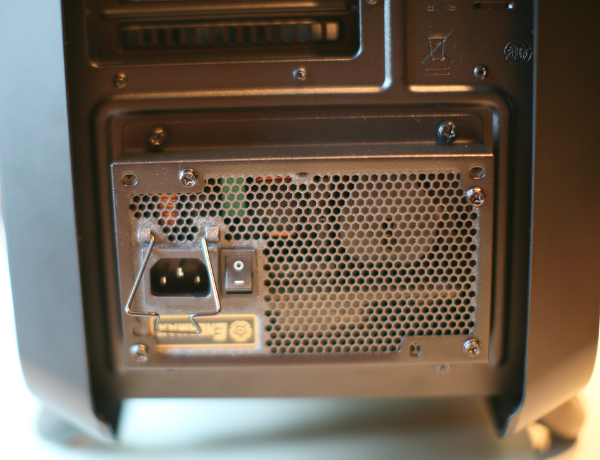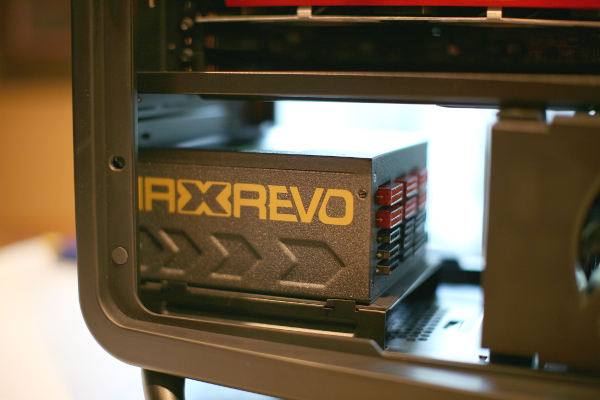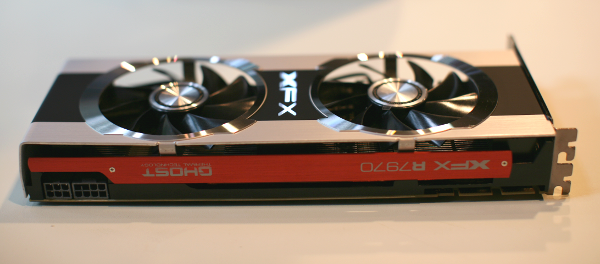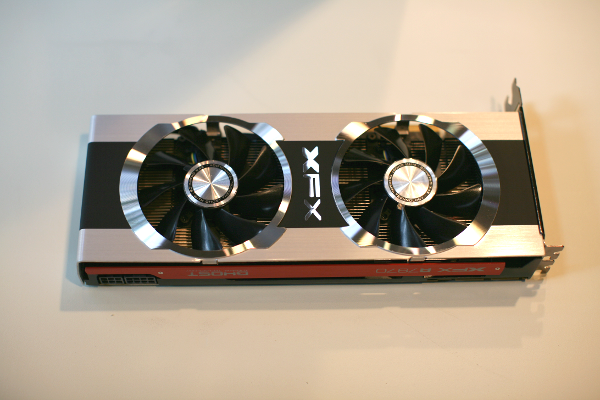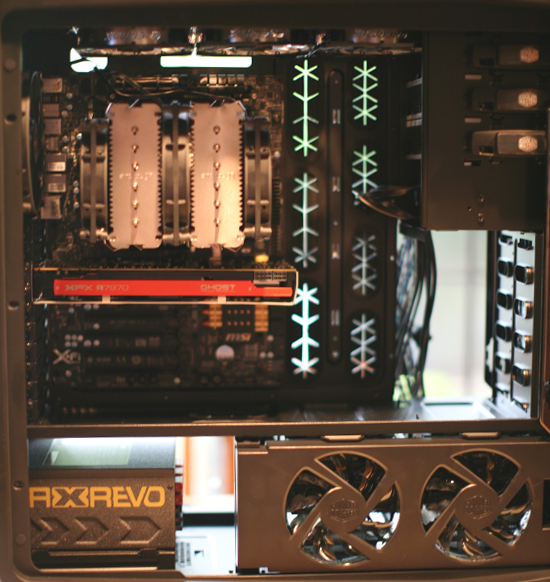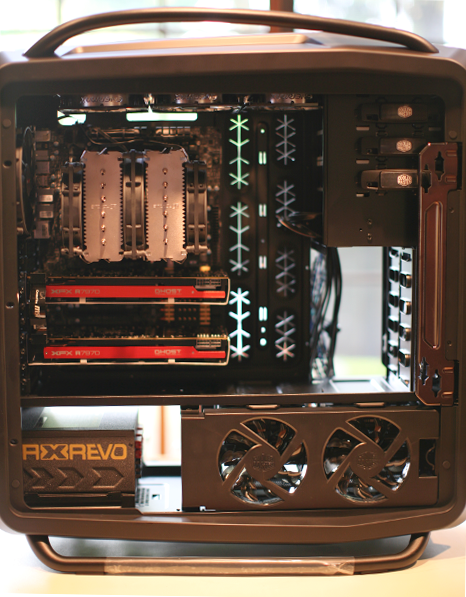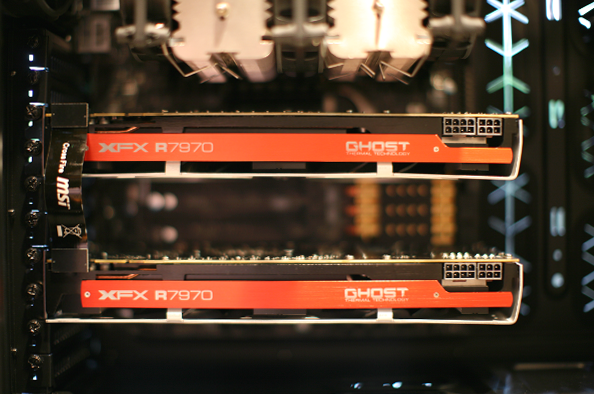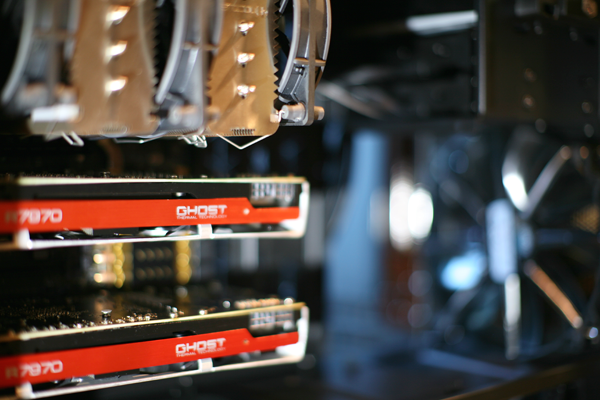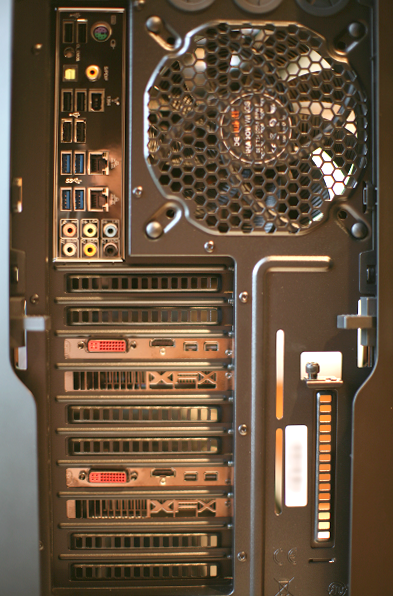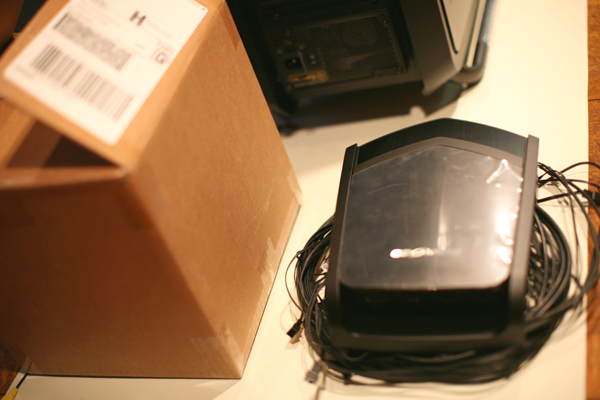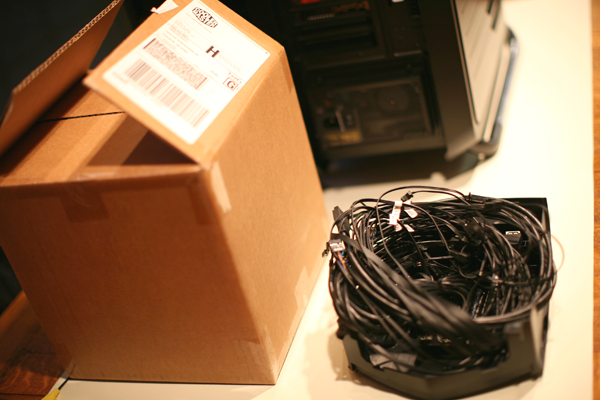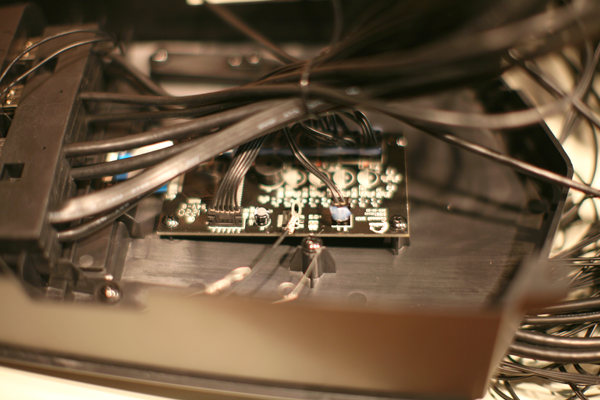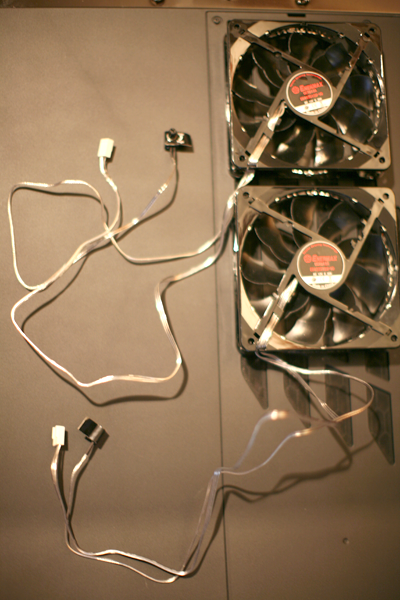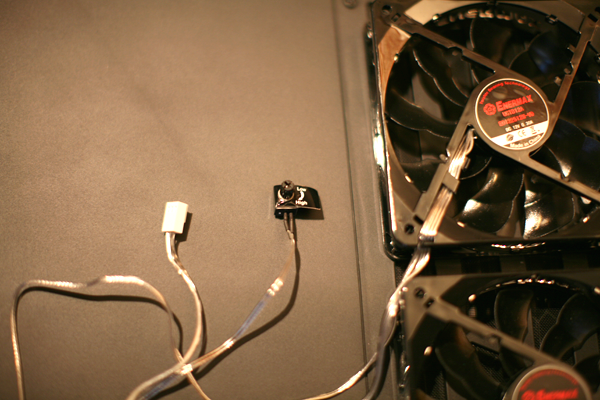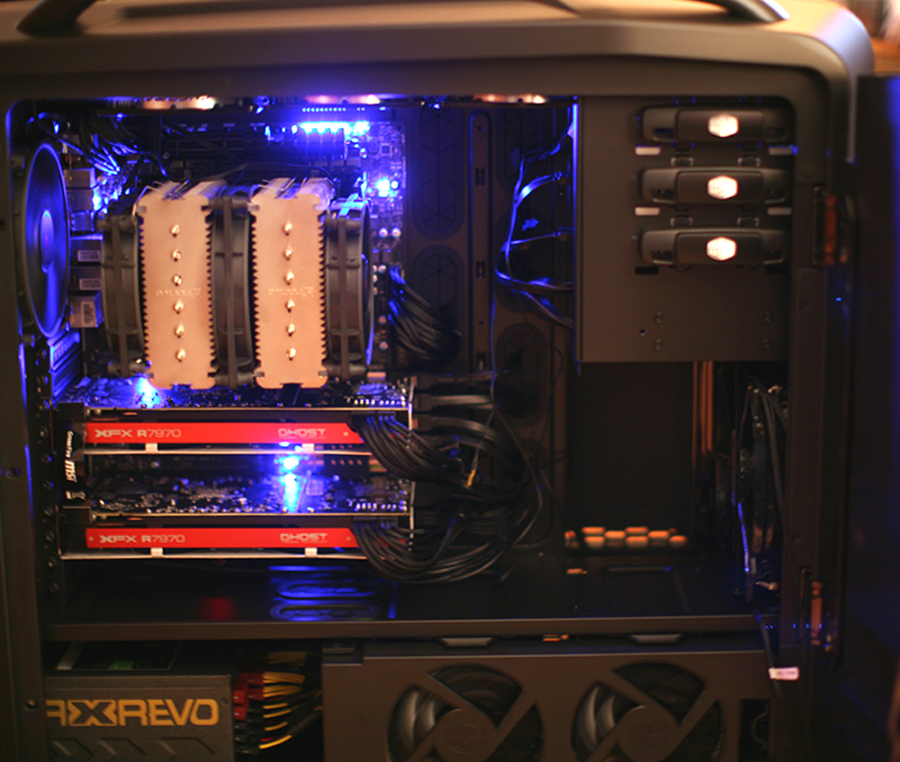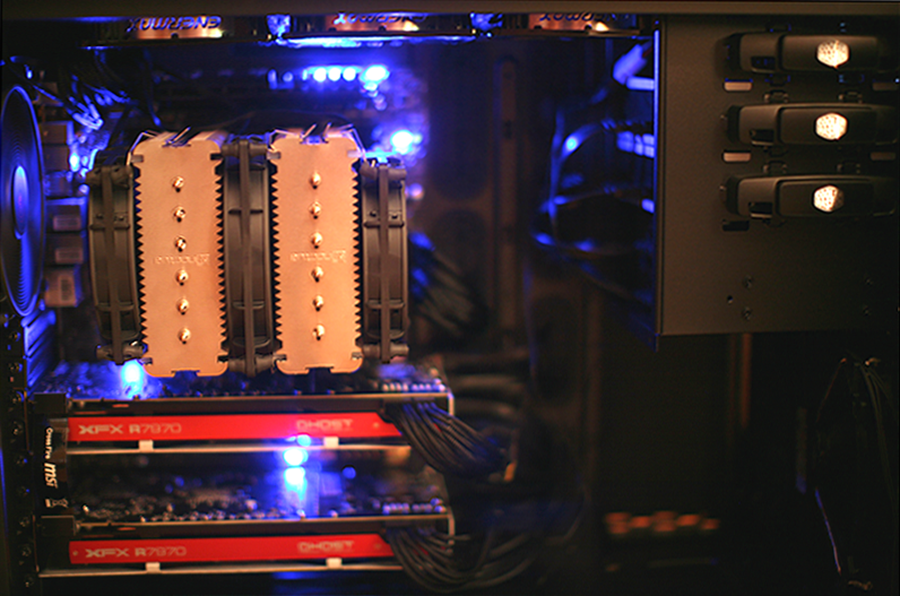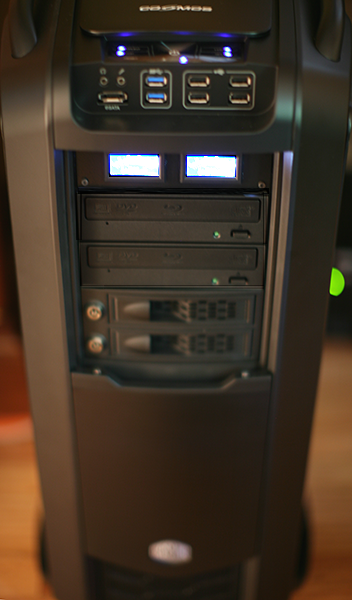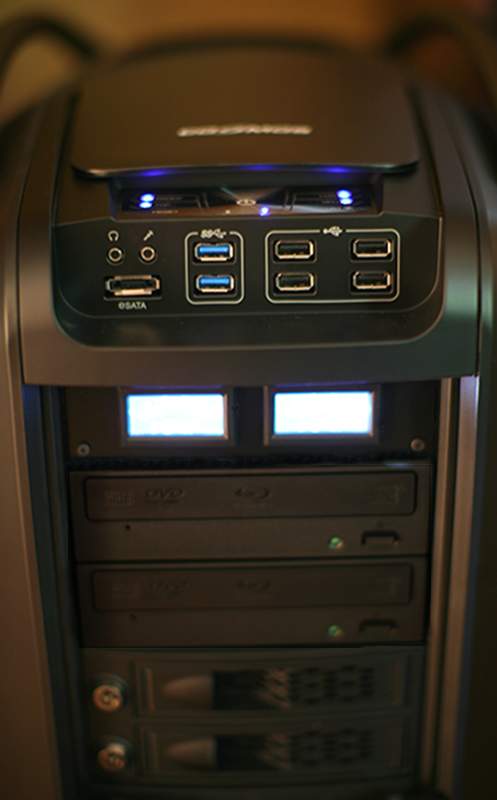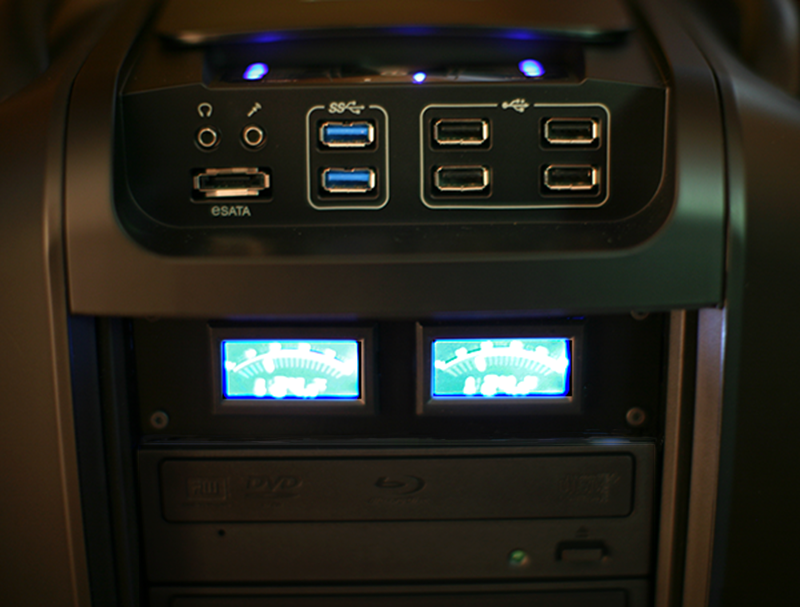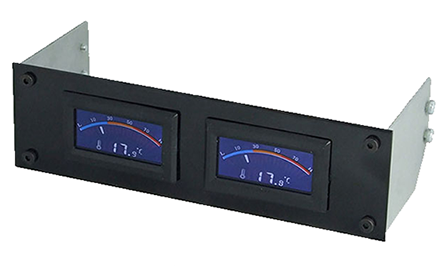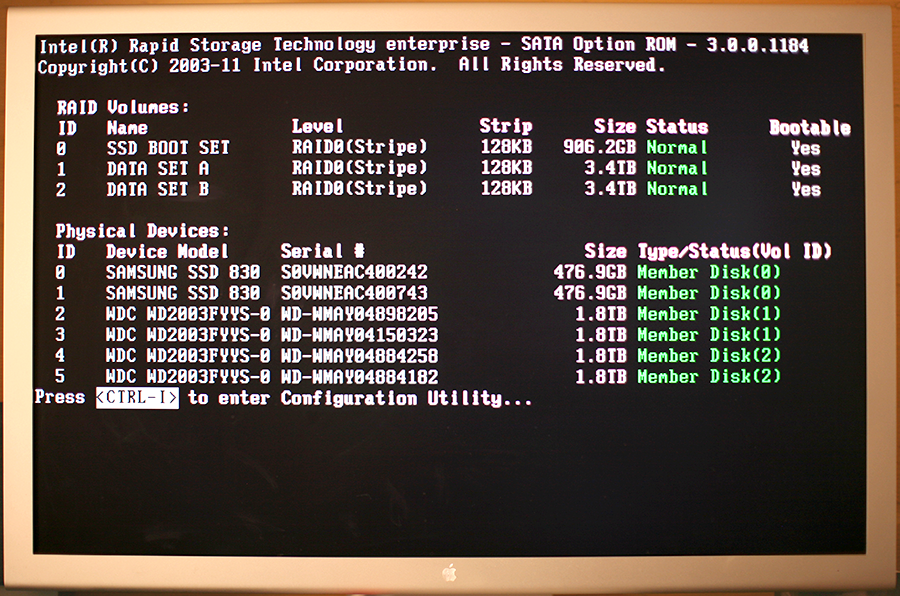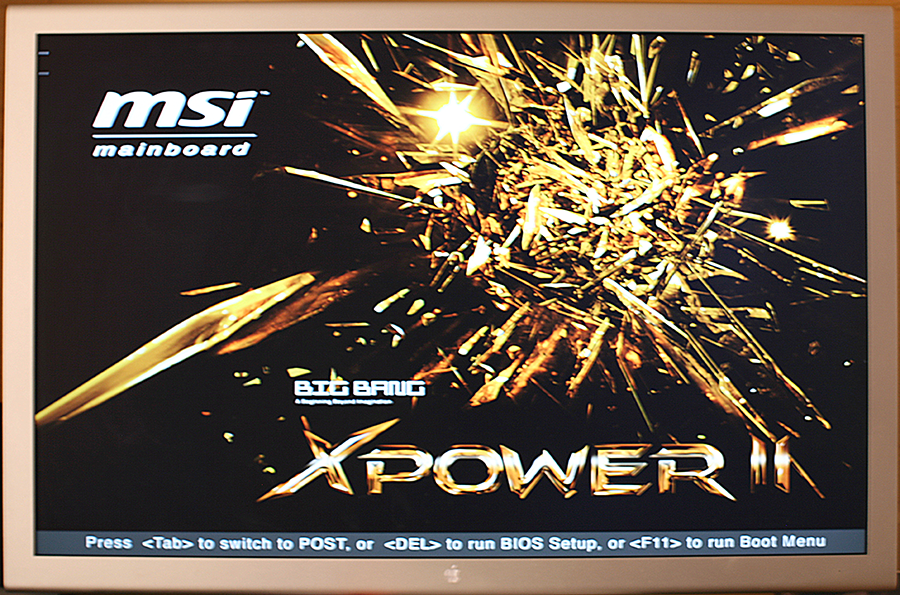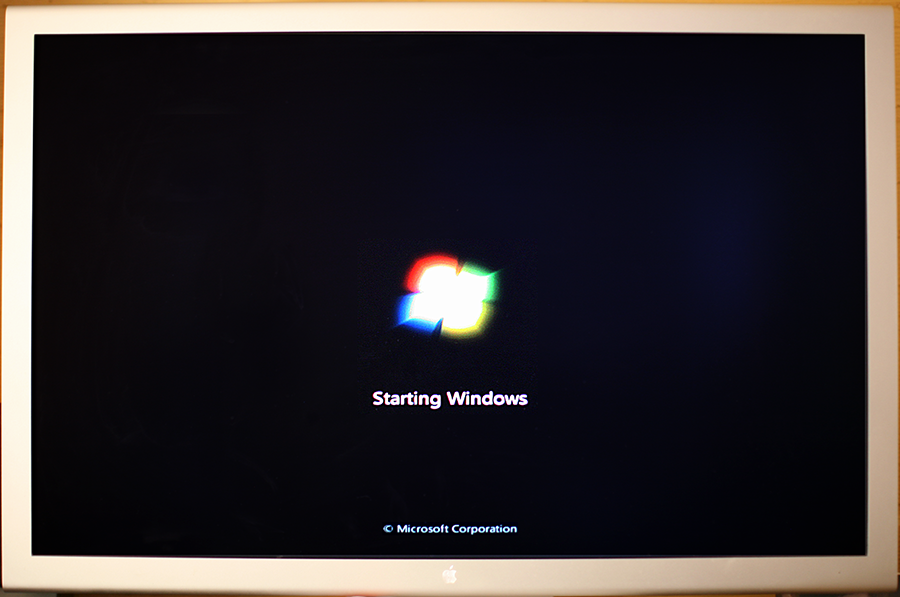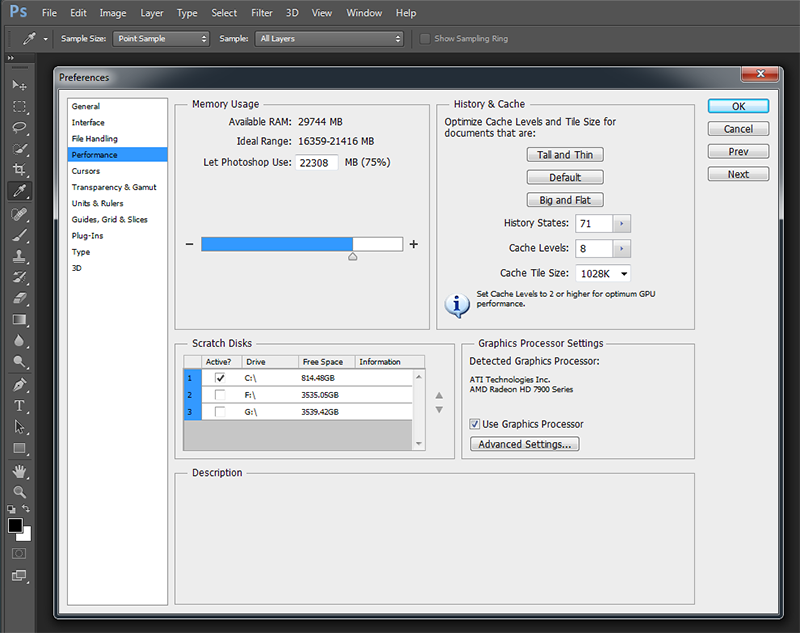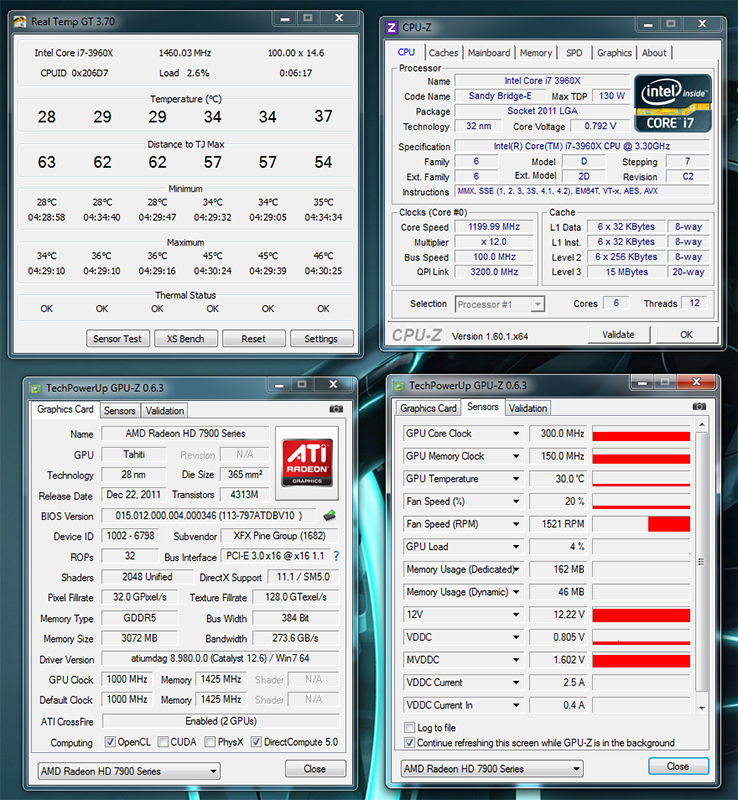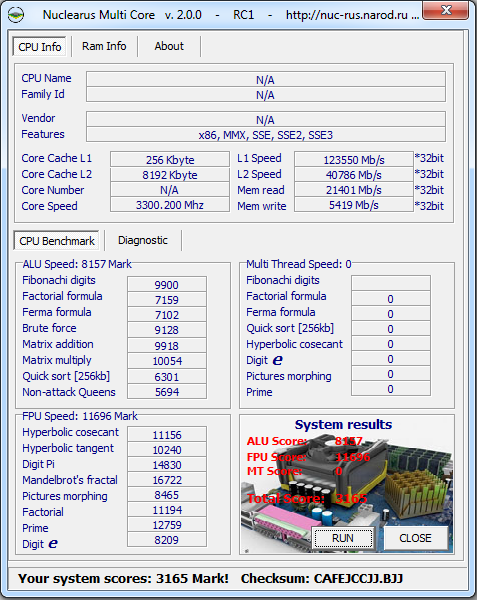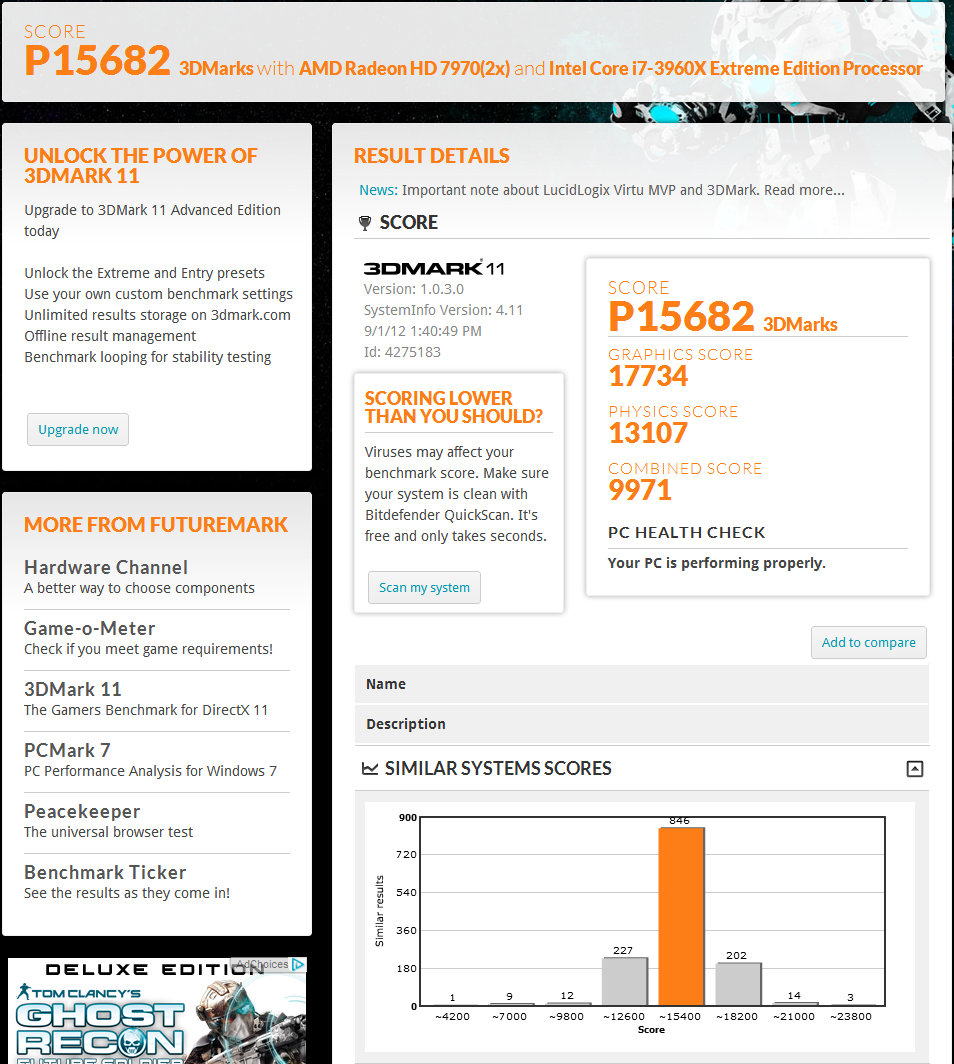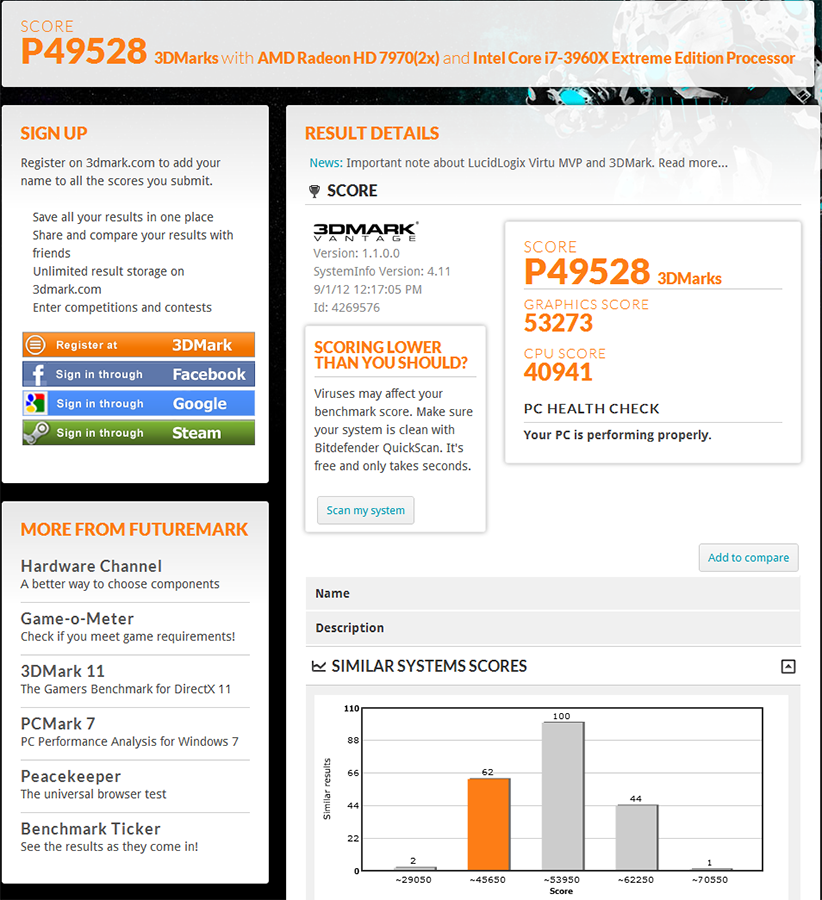SonataSys
Limp Gawd
- Joined
- Mar 27, 2009
- Messages
- 150
This workstation is designed for heavy post-production editing and software engineering, with some occasional gaming.
This preview video summarizes the chosen components and build design.
Cooler Master Cosmos II Tower
Enermax MaxRevo 1350W Power Supply
MSI Big Bang-XPower II Intel LGA 2011 X79 Mainboard
Intel Core i7-3960X Extreme Edition Sandy Bridge-E 3.3GHz LGA 2011 CPU
3-Way SLI EVGA GTX TITAN SuperClocked Signature 06G-P4-2793-KR
Corsair Dominator GT 32GB (4 x 8GB) DDR3 1866Mhz (PC3 15000) 1.5v CAS 9-10-9-27 SDRAM
RAID-0 Boot Set: Two Samsung 830 Series 512GB Solid State Drive Array (1TB)
RAID-0 Data Set A: Two Western Digital RE4 2TB SATA 3.0Gb/s 3.5" 7200 RPM Disk Array (4TB)
RAID-0 Data Set B: Two Western Digital RE4 2TB SATA 3.0Gb/s 3.5" 7200 RPM Disk Array (4TB)
RAID-5 Archive Set: Four Western Digital Green 2TB 5400 RPM Drobo External Disk Array (6TB)
Noctua NH-D14 SE2011 6-Heatpipe CPU Heatsink
Two Pioneer BDR-207DBKS Blu-ray burners
Note: The original Radeon HD 7970 CrossFireX configuration is being replaced by EVGA GeForce GTX Titan video cards in a 3-way SLI configuration.
The following operating systems are used to develop and test software on various platforms, native and virtual machines:
Navtive - Windows 7 Professional SP1 (64-bit)
Oracle VM VirtualBox - CentOS Linux
Oracle VM VirtualBox - Solaris
Oracle VM VirtualBox - Ubuntu Linux
Oracle VM VirtualBox - Mac OS X Server
Oracle VM VirtualBox - Windows XP
The following engineering software is used for development work:
Storage: Oracle, MongoDB and Cassandra databases
Back-end: WebLogic, JBoss and Tomcat containers, Apache, Spring/CXF web services
Front-end: HTML5, GWT, JSF, Grails and Struts
Languages: Java, JavaScript, Groovy, Gradle
IDE: IntelliJ IDEA, Eclipse, DreamWeaver, AppCode
The following editing software is used for post-production work:
Adobe Master Collection CS6
Nero Ultra Edition
Handbrake
Here are the boxing photographs:
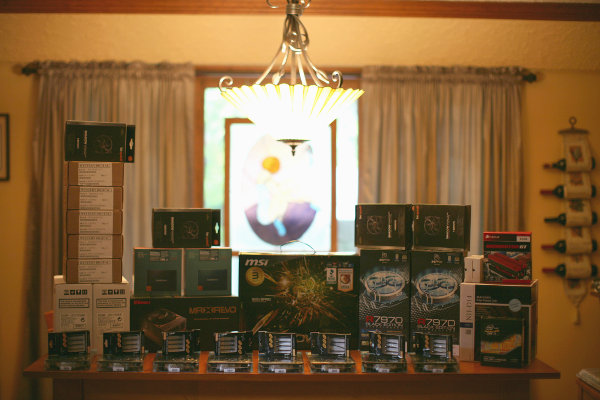
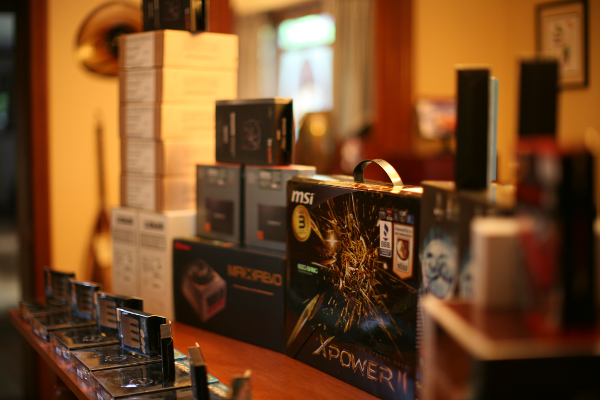
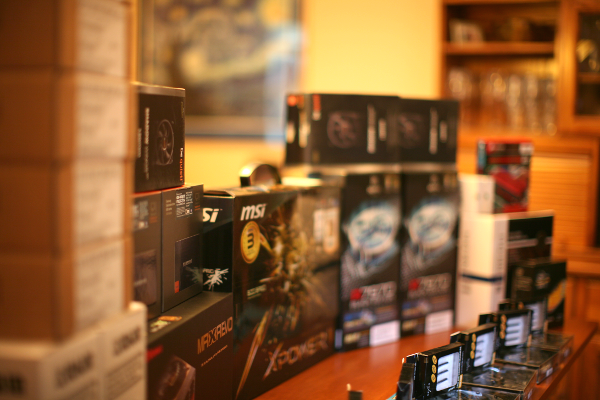




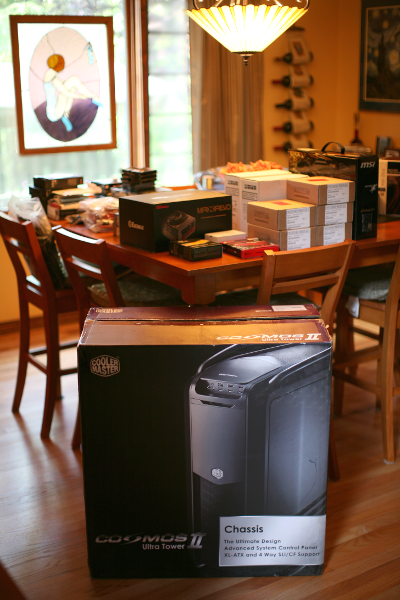
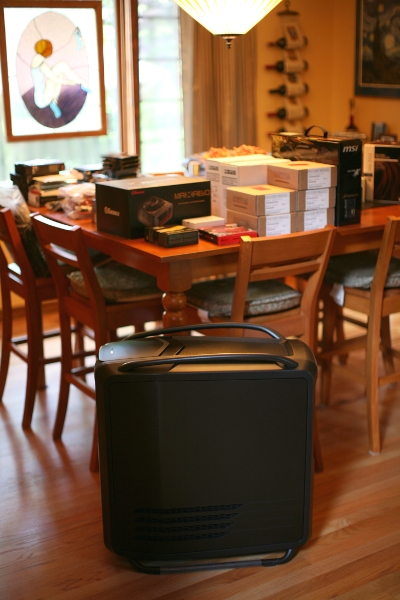
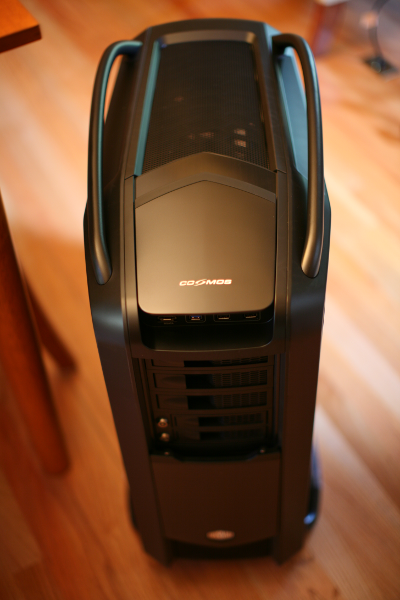
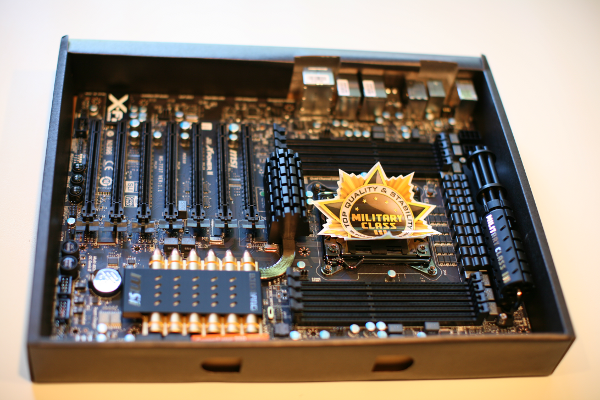
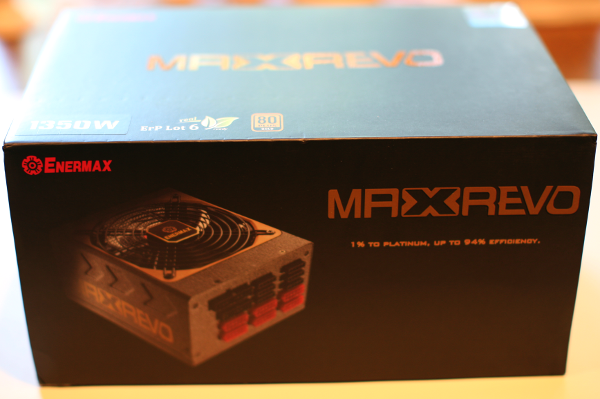
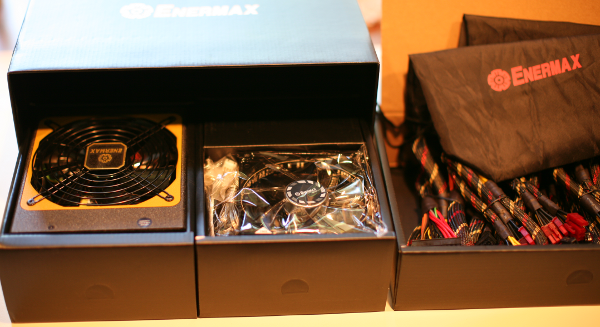



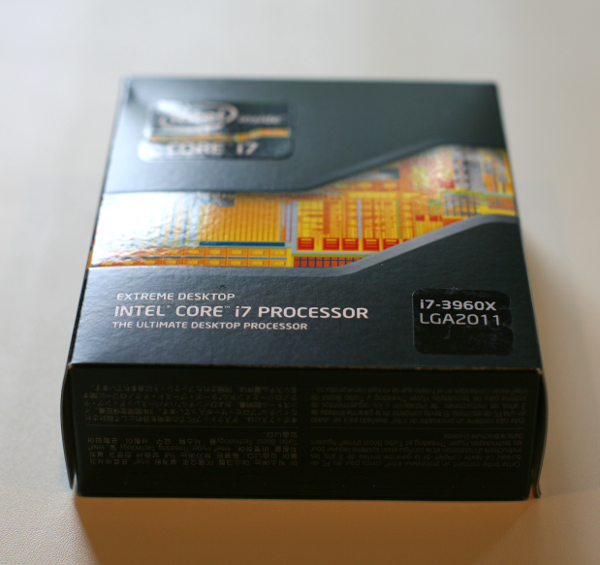
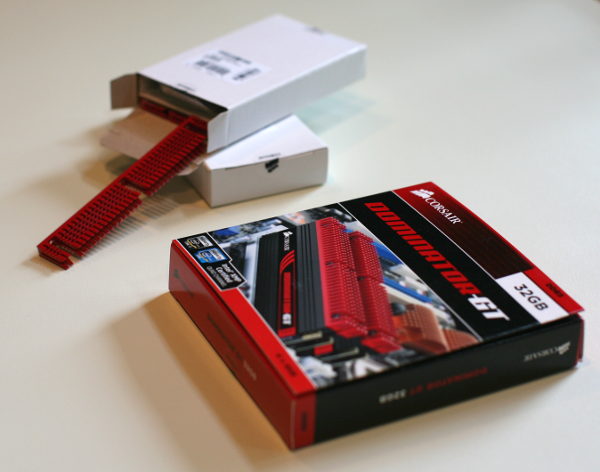

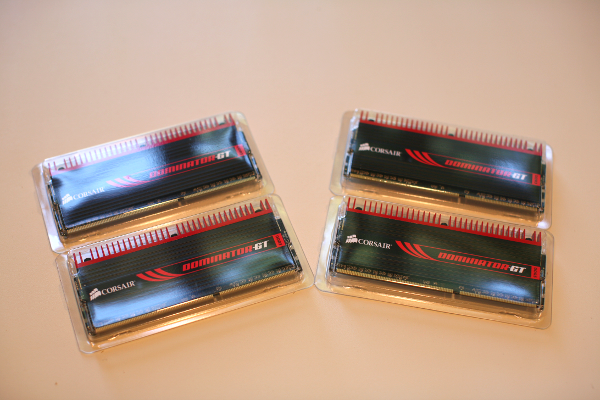
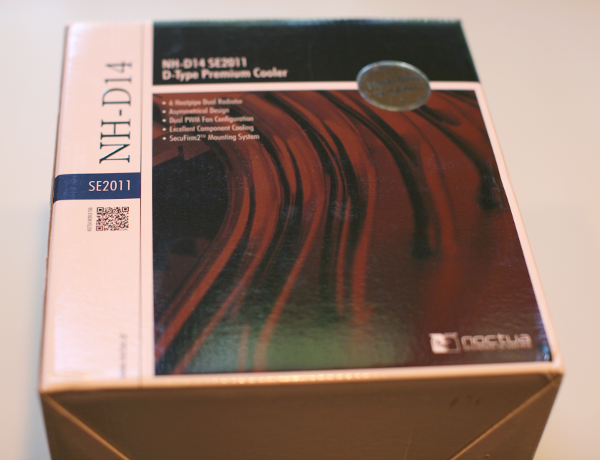
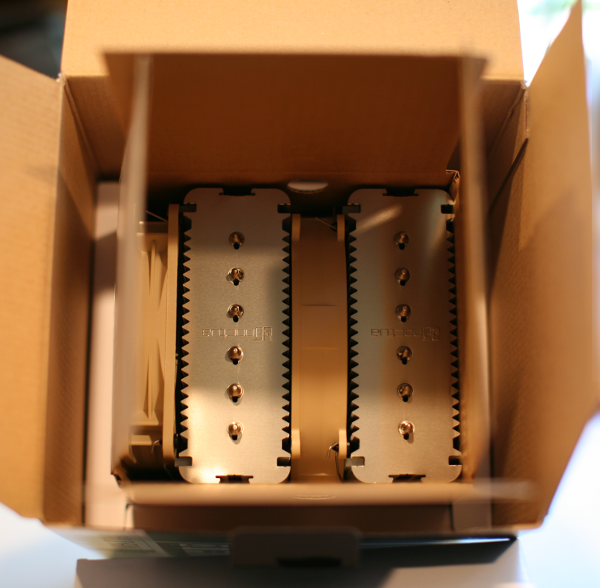
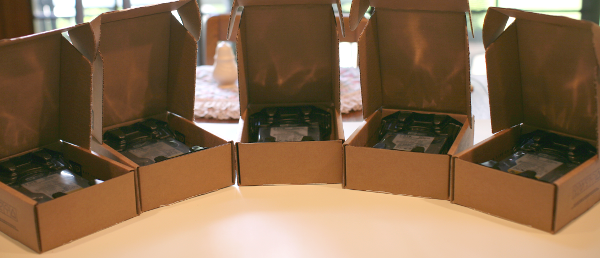
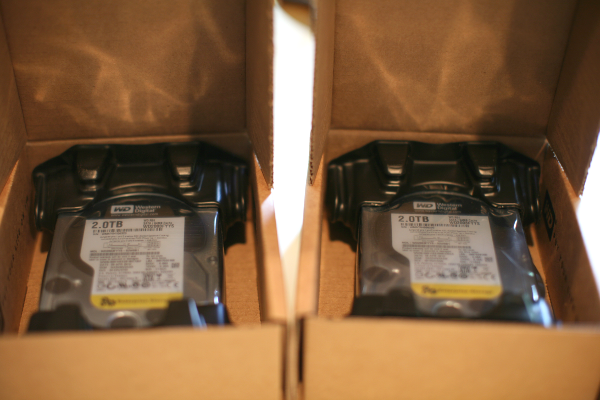

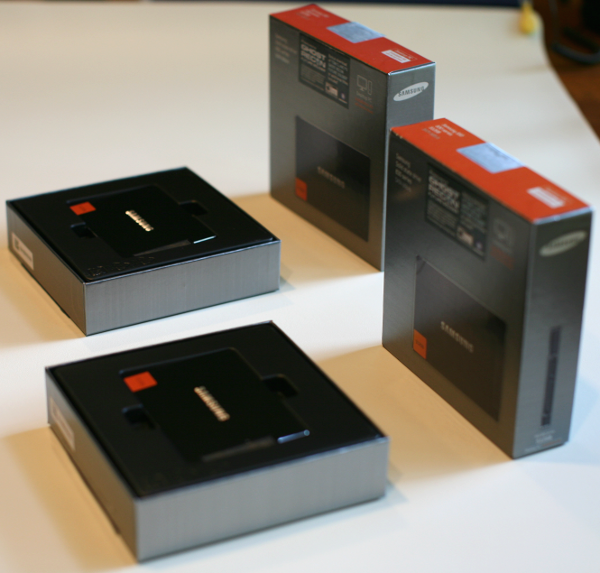
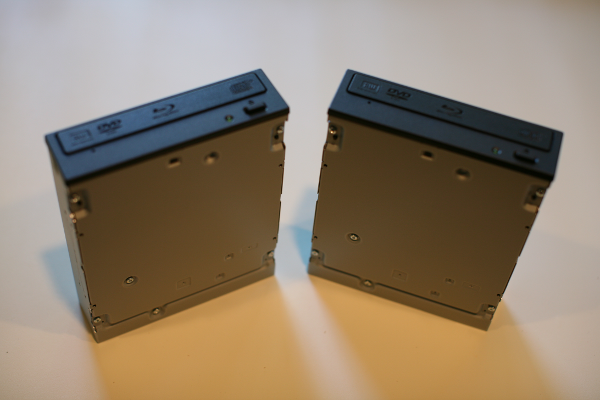
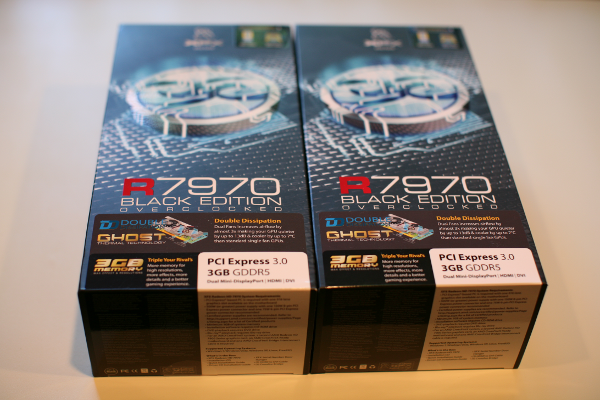
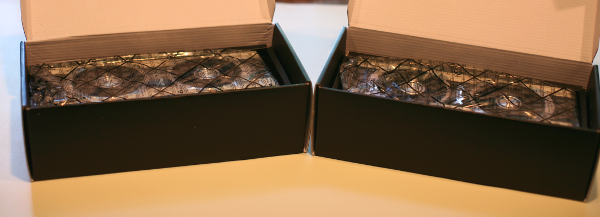

This preview video summarizes the chosen components and build design.
Cooler Master Cosmos II Tower
Enermax MaxRevo 1350W Power Supply
MSI Big Bang-XPower II Intel LGA 2011 X79 Mainboard
Intel Core i7-3960X Extreme Edition Sandy Bridge-E 3.3GHz LGA 2011 CPU
3-Way SLI EVGA GTX TITAN SuperClocked Signature 06G-P4-2793-KR
Corsair Dominator GT 32GB (4 x 8GB) DDR3 1866Mhz (PC3 15000) 1.5v CAS 9-10-9-27 SDRAM
RAID-0 Boot Set: Two Samsung 830 Series 512GB Solid State Drive Array (1TB)
RAID-0 Data Set A: Two Western Digital RE4 2TB SATA 3.0Gb/s 3.5" 7200 RPM Disk Array (4TB)
RAID-0 Data Set B: Two Western Digital RE4 2TB SATA 3.0Gb/s 3.5" 7200 RPM Disk Array (4TB)
RAID-5 Archive Set: Four Western Digital Green 2TB 5400 RPM Drobo External Disk Array (6TB)
Noctua NH-D14 SE2011 6-Heatpipe CPU Heatsink
Two Pioneer BDR-207DBKS Blu-ray burners
Note: The original Radeon HD 7970 CrossFireX configuration is being replaced by EVGA GeForce GTX Titan video cards in a 3-way SLI configuration.
The following operating systems are used to develop and test software on various platforms, native and virtual machines:
Navtive - Windows 7 Professional SP1 (64-bit)
Oracle VM VirtualBox - CentOS Linux
Oracle VM VirtualBox - Solaris
Oracle VM VirtualBox - Ubuntu Linux
Oracle VM VirtualBox - Mac OS X Server
Oracle VM VirtualBox - Windows XP
The following engineering software is used for development work:
Storage: Oracle, MongoDB and Cassandra databases
Back-end: WebLogic, JBoss and Tomcat containers, Apache, Spring/CXF web services
Front-end: HTML5, GWT, JSF, Grails and Struts
Languages: Java, JavaScript, Groovy, Gradle
IDE: IntelliJ IDEA, Eclipse, DreamWeaver, AppCode
The following editing software is used for post-production work:
Adobe Master Collection CS6
Nero Ultra Edition
Handbrake
Here are the boxing photographs:






























Last edited:
![[H]ard|Forum](/styles/hardforum/xenforo/logo_dark.png)
